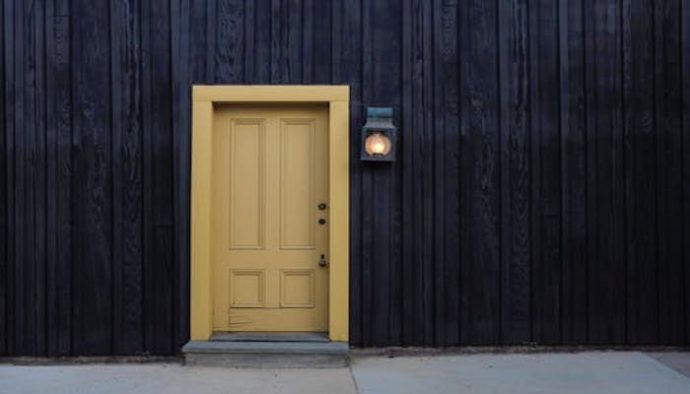There are seven “I am” statements from Jesus in the Book of John:
- I am the bread of life (John 6:35).
- I am the light of the world (John 8:12).
- I am the good shepherd (John 10:11).
- I am the resurrection and the life (John 11:25).
- I am the way, the truth, and the life (John 14:6).
- I am the true vine (John 15:1).
With each one, Jesus reveals his identity. John’s purpose in writing his gospel was to present Jesus as the living and eternal Word of God, and with each of these statements, Jesus testifies about who he truly is.
Six of the seven are listed above, and then there’s this one:
Verily, verily, I say unto you, I am the door of the sheep (John 10:7, KJV).
There are two main uses of a door, both of which stem from the nature of being a door: to go in, and to go out. And Jesus is both for us.
He is the way into eternal life, peace with God, and true purpose and satisfaction. And He is the only way, in fact. Either you come to God through Jesus the door or you do not come at all. Again, from the Book of John:
“I am the way, the truth, and the life. No one comes to the Father except through me” (John 14:6).
We have, and continue, to seek other doors than Jesus. We construct them with our own hands. They are doors of morality, doors of philosophy, doors of charity, doors of technology – but none of them open to God, for none of the doors can go through the wall of sin that keeps us from God. None but the door of Jesus. He is our way in.
But Jesus is also our way out:
About eight days after this conversation, he took along Peter, John, and James and went up on the mountain to pray. As he was praying, the appearance of his face changed, and his clothes became dazzling white. Suddenly, two men were talking with him—Moses and Elijah. They appeared in glory and were speaking of his departure, which he was about to accomplish in Jerusalem (Luke 9:28-31).
Jesus, Peter, James, and John were with Jesus on the Mount of Transfiguration. Before the very eyes of those three, Jesus was transfigured into something glorious. They saw Him as the Son of God, in whatever form that really looks like. And not only that—Moses and Elijah showed up for the party, too, and they had a conversation.
The text tells us they were talking about Jesus’ “departure” – the impending climax of Jesus’ ministry in his coming death, resurrection, and departure from the world. But the word used for “departure” is the same word in the Greek translation of the Old Testament used for “exodus.” And an “exodus” is something all three had in common.
Moses led the children of Israel out of slavery in an exodus. Elijah experienced his own exodus as He was taken up from the earth in a chariot of fire. And Jesus? Well, Jesus was going to do both—the children of God would be led on an exodus out of sin and death and then Jesus would be taken up into heaven after His resurrection.
Jesus is our way in, but Jesus is also our way out. He’s our way into peace with God, but He’s also our way out of sin and death. He’s our way into eternal joy, but He’s also our way out of the trivial pleasures of this world.
The door swings both ways. And praise God, Jesus not only brings us in but also lets us leave things behind.
Subscribe to MichaelKelley.co
Never miss a new post. Subscribe to receive these posts in your inbox and to receive information about new discipleship resources.




